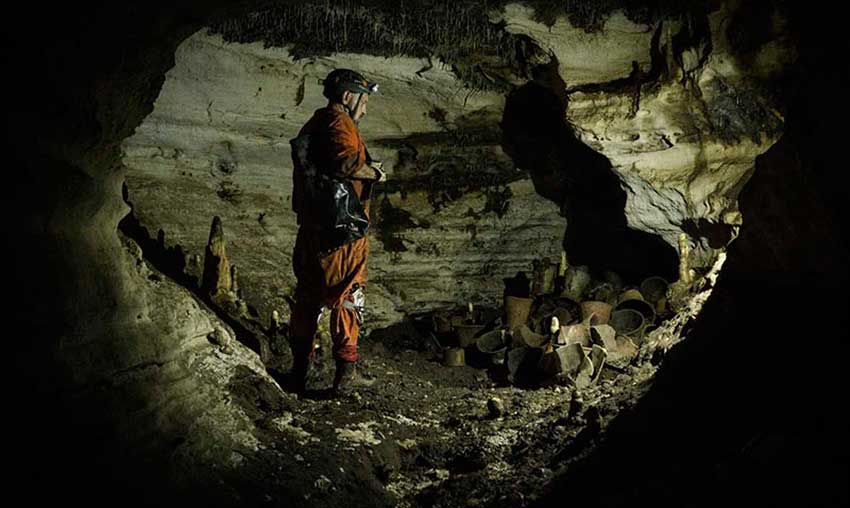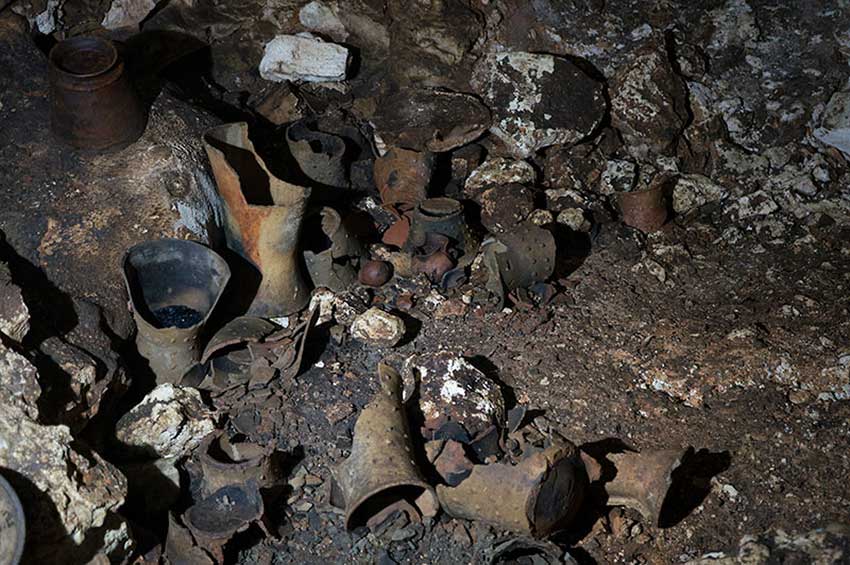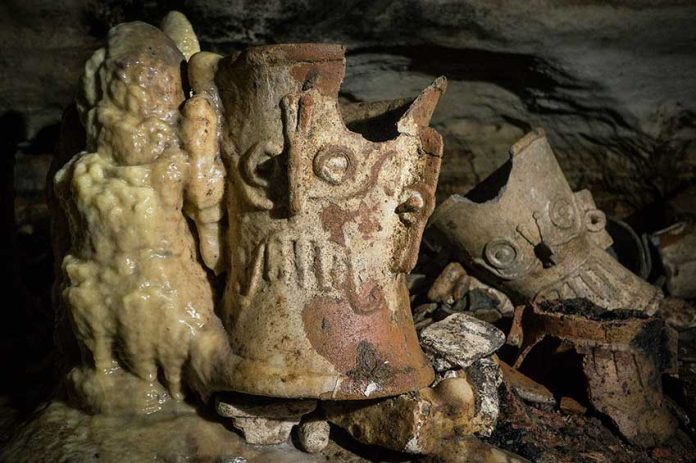Archaeologists exploring and mapping subterranean water deposits on the Yucatán peninsula have discovered a treasure trove of ritual objects in a cave system beneath the ancient Mayan city of Chichén Itzá.
Pedro Francisco Sánchez Nava, archaeology coordinator at the National Institute of Anthropology and History (INAH), and Guillermo de Anda, director of the Great Mayan Aquifer (GAM) project, told a press conference yesterday that hundreds of artifacts were found last year in the cave system known as Balamkú or “cave of the jaguar god.”
The cave system, located 2.7 kilometers east of the El Castillo pyramid at Chichén Itza, was first discovered in 1966 by ejidatarios, or community landowners, from San Felipe, the archaeologists said.
However, archaeologist Víctor Segovia Pinto, who visited the site and noted the presence of extensive archaeological material in a report, ordered the landowners to seal up the entrance to the cave system and for more than 50 years records of its discovery seemed to vanish.
But last year, 68-year-old Luis Un led members of the GAM team to the cave system he first visited with the ejidatarios when he was a teenager.

De Anda, also a National Geographic Explorer, recalled that he had to pull himself on his stomach through the narrow tunnels of Balamkú for hours before he reached a chamber filled with perfectly preserved ceramic incense burners, pots, vases, decorated plates and other objects.
Many of the 200 incense burners feature representations of the rain god Tláloc while their lids have images of the jaguar, a sacred animal for the Mayan people.
Within the incense burners and pots, archaeologists found burned materials, seeds, jade, shells and bone fragments. Stalagmites had formed around the artifacts, which appear to date back to around 1000 A.D.
“I couldn’t speak, I started to cry. I’ve analyzed human remains in [Chichén Itzá’s] Sacred Cenote [sinkhole] but nothing compares to the sensation I had entering alone, for the first time in that cave,” de Anda said.
“You almost feel the presence of the Mayans who deposited these things in there,” he added.
De Anda and James Brady, a California State University professor and co-director of the GAM project, agree that locating Balamkú is the biggest discovery in the area since the Balamkanché cave was found in the 1950s.

“Balamkú will help to rewrite the history of Chichén Itzá . . . The hundreds of archaeological artifacts, belonging to seven offerings that have been documented so far, are in an extraordinary state of preservation. Given that the context remained sealed for centuries, it contains invaluable information related to the foundation and fall of the City of the Water Wizards [Chichén Itzá] and about those who were the founders of this iconic place,” de Anda said.
One hypothesis of the GAM team is that between 700 and 1000 AD, there was a severe drought in the north of the Yucatán peninsula that prompted residents to carry out ceremonies in the underground caves to ask their deities to deliver rain.
The GAM team is now working to map and create a 3D model of the cave system, which measures around 1.3 kilometers. Archaeologists plan to leave the artifacts in the places they were found within the cave.
De Anda said that only a preliminary exploration has been carried out to date, explaining that it is possible that more objects and human remains could be found beneath mud and sediment in Balamkú.
Source: National Geographic (en), INAH (sp)
